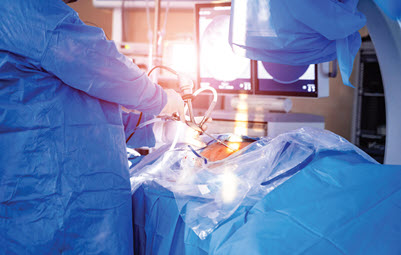Surgical specifics will light the way when coding fusions.
When your surgeon performs spinal fusion, you’ll need several pieces of info to make your claim fly.
Such as? You’ll need to know why the fusion is being performed, as well as other details such as technique and approach.
Deni Adams, CPC, CPB, CPPM, CEMC, CPEDC, CCA, director of coding and implementation services at Kaleidoscope Health Systems in Minneapolis, is an experienced spinal surgery coder. Here’s what she had to say during her “Intro to Spinal Fusion Coding” at HEALTHCON Regional 2023 in Washington, D.C.

Know These Elements for Optimal Fusion Coding
There are a number of conditions that could be made better with spinal fusion. According to Adams, the most common conditions are:
Code also: There are also some special rules on reporting spinal fusion that could benefit the practice. Coders can report instrumentation, grafts, and stereotactic navigation separately with fusion codes (when performed).
Use This Key for Different Approaches
Approach used in spinal fusion is vital toward securing the correct CPT® code for your surgeon’s services. Once you’ve decided on the approach your surgeon used, Adams said you would need this information on surgery specifics:
More on approach: Adams ran down the different types of approaches your surgeon might use during a fusion. Remember to look for this in the encounter notes, as it will make your code choice clearer:
Use These Codes for Interbody, Anterior/Anterolateral Fusions
Once you’ve got the basics of terminology and technique down for spinal fusion, it’s time to move onto the codes. Since there are too many spinal fusion codes to tackle all of them in a single article, we’ll focus on these types: Anterior interbody, lateral interbody, posterior interbody, and anterior/ anterolateral.
Anterior lumbar interbody: If the surgeon performs an anterior lumbar interbody fusion (ALIF), an extreme lateral interbody fusion (XLIF), or oblique lateral interbody fusion (OLIF), you’ll choose 22558 (Arthrodesis, anterior interbody technique, including minimal discectomy to prepare interspace (other than for decompression); lumbar).
If your surgeon performs transforaminal lumbar interbody fusion (TLIF), an extraforaminal lumbar interbody fusion (ELIF), a Kambin lumbar interbody fusion (KLIF), or posterior lumbar interbody fusion (PLIF), you’ll choose from the following codes:

Lateral extracavitary interbody: If the surgeon performs a thoracic or lumbar lateral extracavitary interbody fusion (LEC), you’ll choose either 22532 (Arthrodesis, lateral extracavitary technique, including minimal discectomy to prepare interspace (other than for decompression); thoracic) or 22533 (… lumbar).
Posterior/posterolateral: If the surgeon performs a posterior/ posterolateral spinal fusion, you’ll choose a code from the 22600 (Arthrodesis, posterior or posterolateral technique, single interspace; cervical below C2 segment) through +22614 (… each additional interspace (List separately in addition to code for primary procedure)) range.
Anterior/anterolateral: When the surgeon performs anterior/ anterolateral spinal fusion, coding can get more complicated. There are more codes to choose from, and those codes contain details you’re going to need to know in order to report the correct codes.
The code range you’ll choose from for anterior/anterolateral spinal fusions are 22548 (Arthrodesis, anterior transoral or extraoral technique, clivus-C1-C2 (atlas-axis), with or without excision of odontoid process) through 22586 (Arthrodesis, pre-sacral interbody technique, including disc space preparation, discectomy, with posterior instrumentation, with image guidance, includes bone graft when performed, L5-S1 interspace), according to Adams.
“Remember, each of these codes is for a single interspace,” stressed Adams.
You could also use 22586 to code a pre-sacral interbody fusion, but exercise caution, Adams warned. “Careful with this code, as imaging and instrumentation/grafts are included” in the work units for 22586.
Also: Do not report 22554/22585 in conjunction with 63075 (Discectomy, anterior, with decompression of spinal cord and/ or nerve root(s), including osteophytectomy; cervical, single interspace) even if performed by a separate individual. Use 22551 (Arthrodesis, anterior interbody, including disc space preparation, discectomy, osteophytectomy and decompression of spinal cord and/or nerve roots; cervical below C2) and +22552 (… cervical below C2, each additional interspace (List separately in addition to code for primary procedure)) instead, said Adams.
Keep in mind that spinal fusions for spinal deformity have separate regional codes to report. You’ll choose from the code range 22800 (Arthrodesis, posterior, for spinal deformity, with or without cast; up to 6 vertebral segments) through 22812 (… 8 or more vertebral segments).
